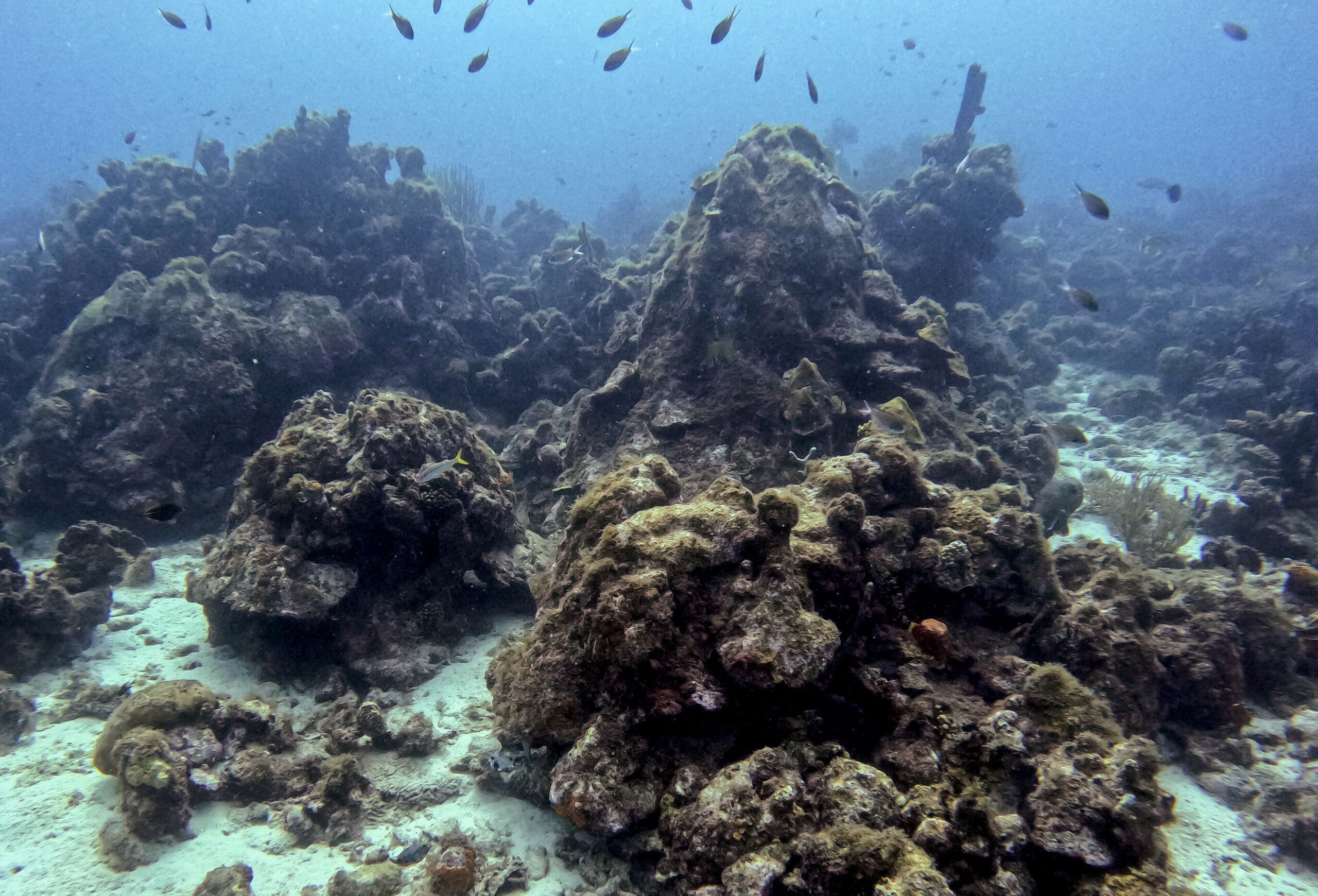Catch limits for scallops on Georges Bank reduced due to increase in predator population – CBC
;Resize=620#)
Report on Sea Scallop Stock Decline in Georges Bank and Implications for Sustainable Development Goals
Executive Summary of Findings
A recent scientific assessment by Fisheries and Oceans Canada (DFO) reveals a significant decline in the sea scallop population in Scallop Fishing Area (SFA) 27A on Georges Bank. This development poses challenges to marine ecosystem health and the regional economy, directly engaging several United Nations Sustainable Development Goals (SDGs), particularly SDG 14 (Life Below Water).
- Biomass Reduction: Fully recruited scallop biomass decreased from 31,095 tonnes in 2023 to 13,570 tonnes in 2024. Recruit biomass saw a 72% drop in the same period.
- Causal Factors: The decline is attributed to increased natural mortality, likely driven by environmental variability and a documented increase in predator populations, notably sea stars and crabs.
- Regulatory Action: In response, the Total Allowable Catch (TAC) for 2025 has been reduced from 4,000 tonnes to 2,100 tonnes to protect the remaining stock.
Alignment with SDG 14: Life Below Water
The situation on Georges Bank is a critical case study for the implementation of SDG 14, which aims to conserve and sustainably use the oceans, seas, and marine resources. The management response reflects a direct application of its core targets.
- Target 14.2 (Ecosystem Management): The stock decline, linked to a rise in predator abundance, highlights an ecosystem imbalance. The ongoing monitoring and research efforts are essential for sustainably managing and protecting this marine ecosystem from further adverse impacts.
- Target 14.4 (Sustainable Harvesting): The decision by DFO to significantly reduce the TAC is a direct and necessary action to regulate harvesting. This measure aims to end overfishing and restore fish stocks in the shortest time feasible, which is the central objective of Target 14.4, ensuring the long-term viability of the scallop fishery.
Key Data and Scientific Assessment
The DFO science advisory report provides the quantitative basis for the management decisions. The primary data points indicating the severity of the stock decline are:
- Fully Recruited Biomass: A decrease to 13,570 tonnes in 2024, down from 31,095 tonnes in 2023.
- Recruit Biomass: A 72% reduction from 2023 to 2024, indicating a future challenge for stock recovery.
- Total Allowable Catch (TAC): An interim TAC for 2025 set at 2,100 tonnes, a substantial reduction from 4,000 tonnes in 2024.
Management Response and Conservation Measures
The reduction of the TAC is a precautionary measure designed to support the goals of SDG 14. By reducing fishing pressure, the action aims to leave sufficient biomass in the ocean to reproduce and facilitate recovery. Conservation experts note this is the most effective immediate response to such an episodic event. The coming years will be critical for monitoring whether the stock begins to rebound, with 2026 and 2027 data being key indicators of a potential trend versus a short-term fluctuation.
Economic Impact and Industry Adaptation (SDG 8 & SDG 12)
The TAC reduction has economic implications, aligning with SDG 8 (Decent Work and Economic Growth) and SDG 12 (Responsible Consumption and Production). The regional seafood industry is demonstrating resilience and a commitment to sustainable production through adaptive strategies.
- Economic Mitigation: Fishing companies operating in SFA 27A are licensed to fish on multiple banks, allowing them to redirect effort based on stock health and yield. This flexibility mitigates the immediate economic impact.
- Market Factors: Strong market prices for scallops are currently helping to relieve financial pressure on producers, supporting the industry’s economic stability during this period of reduced harvesting.
Future Outlook and Monitoring
Scientists are not projecting an immediate recovery in 2025. The situation necessitates continuous and rigorous monitoring to inform future management decisions. The long-term sustainability of the Georges Bank scallop fishery depends on this science-based approach to resource management, which is fundamental to achieving the targets of SDG 14. The data collected over the next several years will be crucial in determining whether this is a cyclical event or a more permanent shift in the marine ecosystem.
Analysis of Sustainable Development Goals in the Article
1. Which SDGs are addressed or connected to the issues highlighted in the article?
-
SDG 14: Life Below Water
- The article’s central theme is the health and management of a marine species, the sea scallop. It discusses the decline in scallop biomass, the impact of natural predators, and the management measures taken to ensure the sustainability of the stock, all of which fall directly under the purview of protecting life below water.
-
SDG 12: Responsible Consumption and Production
- The article highlights the sustainable management of a natural resource. The decision by Fisheries and Oceans Canada (DFO) to reduce the Total Allowable Catch (TAC) is a direct application of responsible production principles, ensuring that harvesting levels are adjusted based on the health of the resource to prevent depletion.
-
SDG 8: Decent Work and Economic Growth
- The article touches upon the economic implications of the scallop stock decline. It mentions that scallops are one of Nova Scotia’s “most lucrative seafood species” and discusses how the fishing industry is adapting to the lower TAC by shifting effort to other areas and benefiting from strong prices. This connects the environmental issue to the economic well-being and resilience of the local seafood industry.
2. What specific targets under those SDGs can be identified based on the article’s content?
-
Target 14.4: End overfishing and restore fish stocks
- This target aims to “effectively regulate harvesting and end overfishing… and implement science-based management plans, in order to restore fish stocks.” The article provides a clear example of this in action. The DFO conducted a “stock assessment,” which is a science-based plan, and as a result, reduced the “interim total allowable catch (TAC) … to 2,100 tonnes, down from 4,000 tonnes.” This action is explicitly taken to “protect overall sustainability” and allow the biomass to reproduce.
-
Target 14.2: Protect and restore ecosystems
- This target focuses on sustainably managing and protecting marine ecosystems to avoid adverse impacts. The article discusses major changes in the ecosystem, noting that “predator abundance, notably sea stars and crabs, has increased within the areas of known scallop distribution,” which contributes to “increases in natural mortality.” The management response of reducing the catch is a measure to strengthen the scallop population’s resilience against these ecosystem pressures.
-
Target 12.2: Sustainable management and efficient use of natural resources
- This target is directly addressed through the actions described in the article. The entire process of conducting a stock assessment and then adjusting the TAC based on scientific findings is a textbook case of implementing sustainable management of a natural resource (the scallop fishery).
3. Are there any indicators mentioned or implied in the article that can be used to measure progress towards the identified targets?
-
Biomass Levels (Indicator for Target 14.4)
- The article provides specific quantitative data that serve as direct indicators of the stock’s health. It states that “Fully recruited biomass decreased to 13,570 tonnes in 2024 from 31,095 tonnes in 2023” and “Recruit biomass… dropped by 72 per cent from 2023 to 2024.” These figures are used to measure the status of the fish stock against biologically sustainable levels.
-
Total Allowable Catch (TAC) (Indicator for Targets 14.4 and 12.2)
- The TAC is a key management indicator. The article specifies the change: “an interim total allowable catch (TAC) was set for 2025 at 2,100 tonnes, down from 4,000 tonnes in 2024.” This adjustment is an indicator of a responsive, science-based management system aimed at sustainable harvesting.
-
Natural Mortality Rate and Predator Abundance (Indicator for Target 14.2)
- The article mentions that the stock assessment noted “major changes in… natural mortality rates.” It further implies an indicator by stating that “predator abundance, notably sea stars and crabs, has increased.” These are indicators used to assess the health and balance of the marine ecosystem where the scallops live.
4. Table of SDGs, Targets, and Indicators
| SDGs | Targets | Indicators |
|---|---|---|
| SDG 14: Life Below Water | 14.4: By 2020, effectively regulate harvesting and end overfishing… and implement science-based management plans, in order to restore fish stocks. |
|
| SDG 14: Life Below Water | 14.2: By 2020, sustainably manage and protect marine and coastal ecosystems to avoid significant adverse impacts. |
|
| SDG 12: Responsible Consumption and Production | 12.2: By 2030, achieve the sustainable management and efficient use of natural resources. |
|
| SDG 8: Decent Work and Economic Growth | 8.4: Improve progressively… global resource efficiency in consumption and production and endeavour to decouple economic growth from environmental degradation. |
|
Source: cbc.ca
What is Your Reaction?
 Like
0
Like
0
 Dislike
0
Dislike
0
 Love
0
Love
0
 Funny
0
Funny
0
 Angry
0
Angry
0
 Sad
0
Sad
0
 Wow
0
Wow
0
















































:focal(1500,1000)/https://media.globalcitizen.org/a6/9a/a69a4720-d8a1-4715-b596-18738d03c05c/rotary_polio_hero_image.jpg?#)







/countries/sri-lanka/photo-credit---dmc-sri-lanka.tmb-1200v.jpg?sfvrsn=dc298bcc_1#)

















